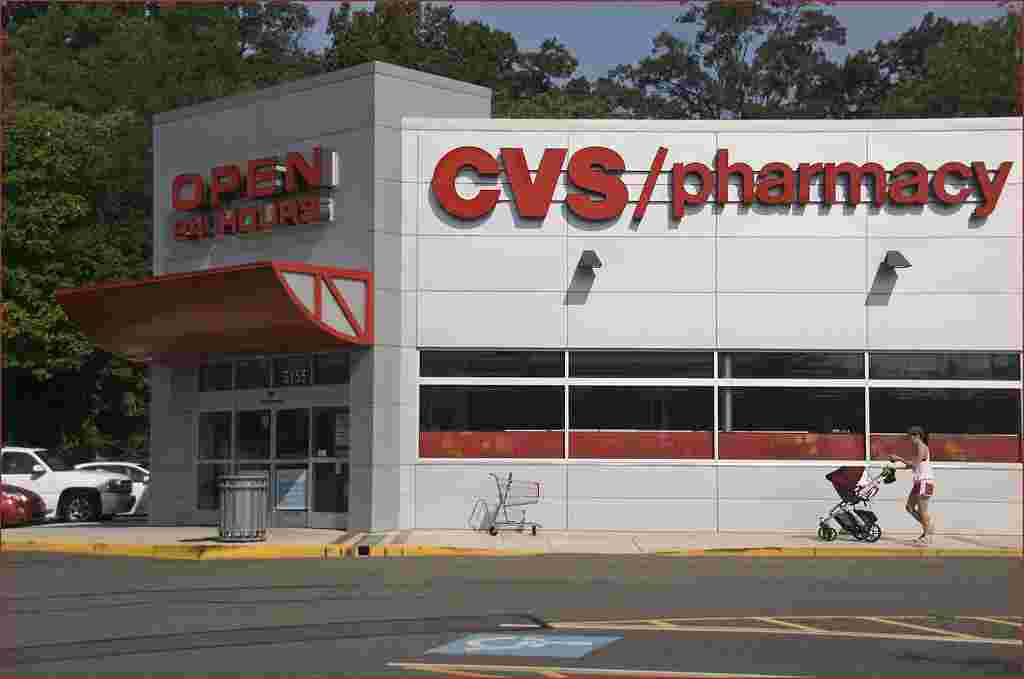
Add your company website/link
to this blog page for only $40 Purchase now!
Continue
The retail landscape is constantly evolving, and recently, CVS store closures have become a prominent topic of discussion. As one of the largest pharmacy chains in the United States, CVS plays a significant role in the retail industry. The decision to close stores raises questions about the impact on both consumers and the overall market. In this blog post, we delve into the reasons behind these closures and explore the implications they hold for the retail industry as a whole. Join us as we analyze the potential consequences and shed light on the future of retail amidst these changes.
The retail industry has been subject to several significant changes in recent years, with CVS, one of the largest pharmacy chains in the United States, making the decision to close a number of its stores. This section will provide an overview of the reasons behind CVS store closures and examine the impact of these closures on the retail industry.
CVS store closures can be attributed to multiple factors. One of the primary reasons is the shifting consumer behavior towards online shopping. With the convenience and accessibility of e-commerce platforms, customers are increasingly opting for the ease of ordering products from the comfort of their own homes. This change in purchasing habits has led to a decrease in foot traffic in brick-and-mortar stores, including CVS.
Another factor contributing to CVS store closures is the evolving landscape of the healthcare industry. CVS stores have traditionally relied heavily on prescription drug sales, but with the rise of mail-order pharmacies and increased competition from other retail chains, the demand for in-store prescription services has declined.
Additionally, CVS store closures can be attributed to the company's strategic decision to optimize its store portfolio. By closing underperforming locations, CVS aims to allocate resources more effectively and focus on areas with higher growth potential.
The closure of CVS stores has had significant implications for the retail industry. Firstly, it highlights the ongoing transformation of the retail landscape, where traditional brick-and-mortar stores must adapt to survive. As more retailers face increased competition from e-commerce giants like Amazon, the need to embrace digital strategies and enhance the in-store experience becomes crucial.
Moreover, the CVS store closures have led to increased competition among other pharmacies and retail chains. As customers seek alternative options for their prescription drug needs, other businesses have an opportunity to capitalize on this market demand. Pharmacies such as Walgreens and Rite Aid, for example, may experience a surge in customers as a result of CVS store closures.
The closures also have implications for the job market. When stores are closed, employees may be laid off or reassigned to other locations. This can lead to job uncertainty and economic challenges for individuals and the communities in which the stores were located.
In conclusion, the closure of CVS stores has been driven by factors such as changing consumer behavior, shifts in the healthcare industry, and strategic decision-making. These closures have had a notable impact on the retail industry, emphasizing the need for adaptability and innovation in an increasingly competitive market. As the retail landscape continues to evolve, it is crucial for businesses to embrace digital strategies and find new ways to engage customers both online and in-store.
 Crowd of people walking on street near shop showcase (Photo by Markus Spiske)
Crowd of people walking on street near shop showcase (Photo by Markus Spiske)
The closure of CVS stores has significant implications for the retail industry, affecting various aspects such as local economies, employment rates, and market competition. In this section, we will explore the impacts of CVS store closures in terms of the local economic impact, job losses and unemployment rates, as well as market competition and consolidation.
CVS is a major player in the retail industry, with its stores operating in communities across the country. When CVS stores close down, it can have a ripple effect on the local economy. These closures can result in a decline in consumer spending within the community, leading to reduced revenue for local businesses and impacting the overall economic health of the area.
Local retailers, such as grocery stores or pharmacies, that relied on CVS foot traffic for their businesses may see a decrease in sales, posing challenges for them to sustain their operations. Additionally, the closure of CVS stores can lead to vacant retail spaces, affecting property values and potentially deterring new businesses from entering the area.
The closure of CVS stores also has an impact on employment rates within the communities where the closures occur. With store closures, employees lose their jobs, contributing to an increase in unemployment rates. This can be particularly concerning in areas where CVS was a significant employer.
Job losses not only affect CVS employees directly but can also impact the supply chain and other local businesses that relied on the store for their customer base. This domino effect can disrupt the livelihoods of many individuals and families, causing financial strain and potential hardships within the community.
CVS store closures can also lead to changes in the market landscape and increased competition among remaining retailers. As CVS exits certain locations, it creates opportunities for other businesses to step in and fill the void. This can result in an intensified competition among remaining retail pharmacies and drive innovation and improvements in service offerings.
However, in some cases, the closure of CVS stores can lead to market consolidation, with larger pharmacy chains acquiring smaller local pharmacies or independent retailers. This consolidation can potentially reduce competition and limit consumer choices, as fewer players dominate the market.
In summary, the effects of CVS store closures extend beyond the individual stores themselves. The closures can have a significant impact on the local economy, causing job losses, increasing unemployment rates, and reshaping market competition. Understanding the implications of these closures is essential for both the retail industry and the communities affected by them.
 Photo of Vintage Stationery (Photo by Ylanite Koppens)
Photo of Vintage Stationery (Photo by Ylanite Koppens)
In the face of CVS store closures, it is crucial for retailers to adapt and implement strategies that will help them navigate the changing landscape of the retail industry. By diversifying product offerings, embracing e-commerce and online sales, and fostering collaborations and partnerships, retailers can strengthen their position and thrive in a challenging market.
One effective strategy to cope with CVS store closures is to diversify product offerings. By expanding the range of products available, retailers can attract a wider customer base and reduce their reliance on specific product categories. This diversification can be achieved by introducing new product lines, sourcing unique merchandise, or partnering with other brands to offer exclusive items.
Diversifying product offerings not only helps retailers capture new customers but also enhances the overall shopping experience. By providing a broader selection of products, retailers can meet the diverse needs and preferences of their target audience, increasing customer satisfaction and loyalty.
With the rise of digital technology, embracing e-commerce and online sales is essential for retailers facing store closures. Establishing a strong online presence allows retailers to reach a wider audience, extend their market reach, and mitigate the impact of physical store closures.
By investing in a user-friendly and secure e-commerce platform, retailers can provide a seamless shopping experience to their customers. This includes features such as easy navigation, detailed product information, secure payment options, and efficient order fulfillment. Additionally, optimizing their website for search engines can improve online visibility, driving organic traffic and attracting potential customers.
 From above of modern portable computer with open analytical program on screen on white table (Photo by Василь Вовк)
From above of modern portable computer with open analytical program on screen on white table (Photo by Василь Вовк)
Collaborations and partnerships can be valuable strategies for retailers coping with CVS store closures. By joining forces with complementary businesses, retailers can tap into new customer segments, increase brand exposure, and leverage shared resources.
Retailers can explore collaborations with local artisans, influencers, or other retailers to create unique product offerings or exclusive promotions. This not only brings fresh perspectives and attracts new customers but also fosters a sense of community and loyalty among existing customers.
Establishing partnerships with reputable online marketplaces or platforms can also help retailers reach a wider audience without the need for physical store presence. By leveraging the existing infrastructure and customer base of these platforms, retailers can expand their reach and drive sales.
In conclusion, the strategies outlined above - diversification of product offerings, embracing e-commerce and online sales, and collaborations and partnerships - can provide retailers with effective coping mechanisms in the face of CVS store closures. By adapting to the changing landscape of the retail industry, retailers can continue to thrive and succeed in an evolving market.
*[SEO]: Search Engine Optimization
In this section, we will analyze a case study related to CVS store closures and explore the lessons learned as well as the best practices that can be adopted within the retail industry. This case study sheds light on the implications of store closures and offers valuable insights for retailers facing similar challenges.
The case study we will examine is the closure of 50 CVS stores across the United States. This decision was made due to a combination of factors such as declining foot traffic, increased competition from online retailers, and shifting consumer preferences. By analyzing this case study, we can gain a deeper understanding of the impact of store closures on the retail industry.
One key finding from the case study is the importance of adapting to changing consumer behaviors. CVS recognized the shift towards online shopping and the growing demand for convenience. Consequently, they focused on expanding their online presence and investing in their e-commerce platform. This strategic move allowed them to maintain their customer base and mitigate the negative effects of store closures.
Another insight from the case study is the need for retailers to optimize their physical store locations. CVS identified the underperforming stores and decided to close them in order to allocate resources more efficiently. By consolidating their operations and focusing on the stores with higher revenue potential, CVS was able to improve overall profitability.
From the analysis of this case study, several important lessons can be drawn for retailers facing similar challenges:
Embrace e-commerce: To stay competitive, retailers should invest in their online presence and offer convenient options for customers to shop online. This includes user-friendly websites, mobile apps, and efficient delivery services.
Optimize store locations: Retailers should regularly assess the performance of their physical stores and make strategic decisions regarding closures or relocations. By optimizing store locations, retailers can improve profitability and better cater to their target customer base.
Stay customer-centric: Understanding and adapting to evolving customer preferences is crucial for success. Retailers should actively listen to customers, gather feedback, and tailor their offerings to meet changing demands.
Based on the lessons learned, here are some best practices that retailers can implement:
Leverage data analytics: Utilize advanced analytics tools to gain insights into customer behavior, market trends, and sales performance. This data-driven approach can guide decision-making and help retailers make informed choices about store closures or expansions.
Offer omnichannel experiences: Create a seamless shopping experience for customers across multiple channels, including online, mobile, and in-store. Consistency and convenience are key to attracting and retaining customers in today's retail landscape.
Invest in customer service: Providing exceptional customer service can differentiate a retailer from its competitors. Train employees to deliver personalized assistance and make the shopping experience memorable for customers.
 Rolls of assorted fabrics and textiles and sewing patterns inside tailor atelier (Photo by Ksenia Chernaya)
Rolls of assorted fabrics and textiles and sewing patterns inside tailor atelier (Photo by Ksenia Chernaya)
By analyzing case studies like the one mentioned above, retailers can learn from the experiences of others, adapt to industry changes, and implement best practices to thrive in an evolving retail landscape. The insights gained from such studies can help retailers make informed decisions, improve profitability, and meet the ever-changing needs of their customers.
In conclusion, the recent announcement of CVS store closures has significant implications for the retail industry. As we have discussed throughout this blog post, the rise of e-commerce and changing consumer shopping behaviors have been contributing factors to the decline of brick-and-mortar stores. CVS's decision to close underperforming locations reflects the need for retailers to adapt to these changes in order to remain competitive.
The closure of CVS stores highlights the importance of embracing digital transformation and investing in online platforms to meet the evolving demands of consumers. By leveraging technology and providing seamless omnichannel experiences, retailers can attract and retain customers in a highly competitive market.
It is crucial for retailers to analyze market trends, consumer preferences, and adapt their strategies accordingly. This includes optimizing their online presence, enhancing customer experience, and leveraging data-driven insights to drive sales and profitability.
While the CVS store closures may be seen as a challenge for the retail industry, they also present opportunities for retailers to innovate and redefine their business models. By embracing online channels, leveraging technology, and focusing on customer-centric strategies, retailers can thrive in this ever-changing landscape.
In conclusion, the CVS store closures signify the need for retailers to adapt, evolve, and stay ahead of the curve to remain successful in the retail industry. By understanding the implications of these closures and taking proactive measures, retailers can position themselves for long-term growth and success.
